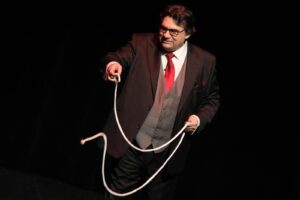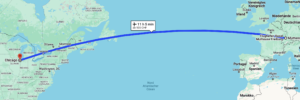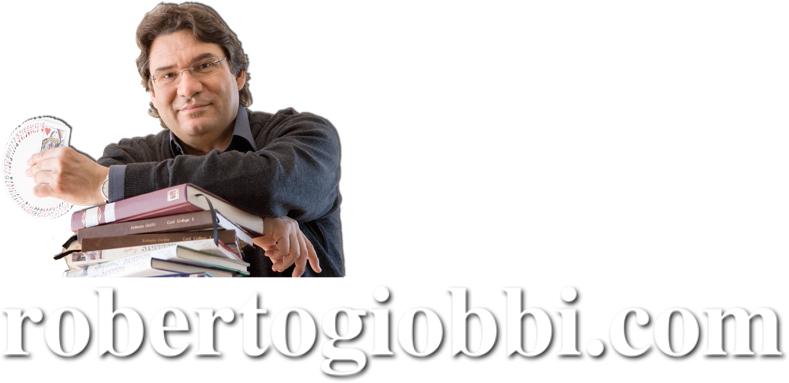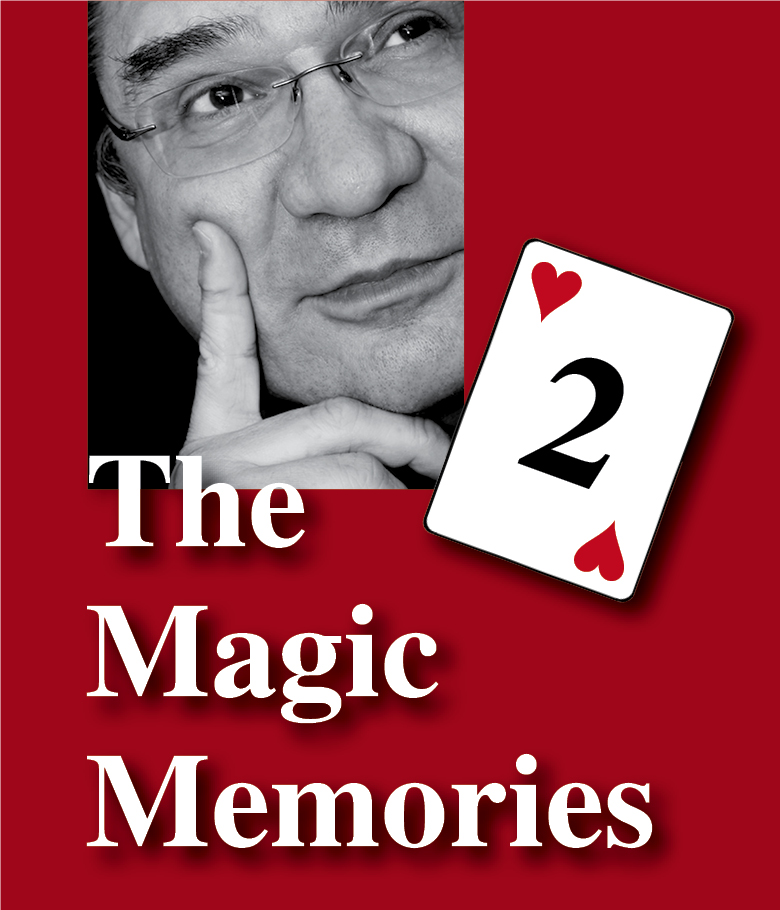
Hello everyone!
Today’s topics are: Report Magicon Convention in Lüdenscheid; On Taking Notes; Muttenz-Chicago Opener
These are The Magic Memories 173, gone online Sunday, April 21, 2024, at 0:07h sharp.
All The Magic Memories from 2021, 2022, and 2023, including the Magic Advent Calendar from 2020, can be found HERE.
Report From Magicon Convention in Lüdenscheid
I am now back from the Magicon Magic Convention in Lüdenscheid, in the north of Germany, an almost eight-hour-door-to-door trip by train and car, each way.
It took even longer on the way there, because of “unauthorized people on the railway”, as the Deutsche Bahn (DB) euphemistically puts it, meaning the most unfortunate fact, that someone decided to put an end to his (or her?) life by throwing himself in front of a full-speed train, one of the safest methods, I am told. Upon asking the personell how often this happens, they answered, “Oh, not so often, about 20 to 30 per month…” The consequence is that the particular rail route is blocked for about two hours until the Attorney General gives clearance again. As sad as this is, I thought I mention it, as it is also part of an Artist’s Life.
I also mention this to encourage more of you, who have to take long travels to get to a booked event, to choose the train over a car or airplane. Such a train ride is usually very comfortable, allows me to read, write, think, have a snack, and even take a short nap. In my studio I have an extra category in my file cabinet “To Read”, which receives all types of thin printed material, and which I then take on my travels and read there. Also my laptop, a MacBook Air, is just the correct size so it can be used on the trains tilting tables, something which in airplanes does not work (unless you fly at least Business Class, something that does not fit any magic conventions travel expenses budget…).
The convention took place in one of the nicest cultural centers I have ever seen, perfectly located in the center of the city of Lüdenscheid (125’000 inhabitants), equipped with everything a conference venue needs: two bars, several rooms for lectures, dealer room etc., a spacious foyer on each floor where people could sit and talk as well as consume drinks and snacks, plus a beautiful theatre (see below). An all-in-one experience.
About thirty people attended the first day, ca. fifty the second day. Personally, I prefer such intimate gatherings over the huge conventions, but both types have their merits, of course.
The Interview
Although the organizers wanted to book me just for a lecture and the evening gala show, I told them that I would also be available for a one-hour interview.
This turned out to be very well received, and I really wonder why they are not doing such things more often at conventions.
I remember that for years Manfred Thumm, the organizer of the legendary “Magic Hands Conventions” in Böblingen-Sindelfingen, had Eberhard Riese, now the president of the “Magischer Zirkel von Deutschland”, conduct what they called a “Podiumsdiskussion”, a panel discussion, on Sunday morning. He used to do this with three invited guests; I always attended and found this item on the agenda one of the most interesting. Conventions should really do more of that.
The questions Nino Arra, one of the organizers, asked, were all intelligent and interesting, and somehow I managed to give good answers.
There were also some questions, to which others might have simply answered “yes” or “no”, and which I answered with a mini-lecture… however, nobody fell asleep, and nobody left, on the contrary, as the interview went on, the dealers all came in, as nobody was at the dealers room.
To keep this short, let me comment just on one question: “What do you think is the most important thing when performing?”
I answered, “To make sure that the performing conditions are the best possible.”
And then I indeed gave a mini-lecture on the topic, which you can more or less read as Chapter 1 in my book (and Penguin 1 lecture) Stand-up Card Magic, “The Standup Card Conjuror”.
When you do close-up it is usually a simple thing to rearrange the situation to get optimal performing conditions, when you perform on a small or large stage, the setting is given by the theater or whatever has the stage, as the place was made for it.
However, in most “stand-up” situations you are booked in a restaurant, a private home, a hotel lobby, an art gallery, a shop etc., i.e., places that have not been conceived for visual performances.
In all these cases it is vital for the success of the show that you can rearrange the chairs, tables etc. so that an optimal experience can be created.
As an example I rearranged the room they gave me for my lecture (see below “The Sunday Lecture”). Being a rectangular room they had connected the chairs to each other and placed them in straight lines.
I had them disconnect every chair, place them in a semi-circle and closer to my performing table. Finally, knowing that a maximum of fifty people were expected, I had them take away the chairs in the back rows, forcing the attendants to sit in the three rows I had arranged closer to me, thus avoiding big gaps of empty seats.
The result was a communicative configuration of the seating, a much better audience dynamics, and ultimately a very successful lecture-performance. This is especially important when such an event takes place on Sunday morning, after one or two days at the convention, where everyone is tired.
There is a lot more to say, but I will leave it at that.
The Gala Show
The gala show took place in the evening, starting at 8 pm and going on for over two hours, plus a 25-minute intermission.
The 600-seat theatre was a truly beautiful one, with a stage where Copperfield could have made his Lear Jet appear (or disappear?). Since Copperfield (should it not be “Goldmine”…) was not available, they had booked the artists, all of them talking acts, including myself. Fortunately there was one juggler who gave the audience a break from a lot of talk and asking people to come on stage.
Briefly: The audience, mostly the conventioneers with families and friends, plus a few locals, were very appreciative, and the whole event was a success. If you read German, you find a report HERE.

The only downer was that there were merely some eighty spectator in the 600-seat theatre, and due to a bug on the Internet booking platform of the theatre, the first one hundred seats in front of the stage were left empty. This certainly did not make it easier on us talking to the audience…
The Sunday Lecture
The organizers told me that after announcing my name the attendance had doubled. However, I am afraid my name is not big enough, as the attendance at my lecture was around fifty people (last year apparently they only had twenty to twenty-five).
Anyway, initially I was given sixty minutes, and after making them an offer they could not refuse, they extended it to 90 minutes. This is the minimum time I need for a lecture, since I do not do quickies, nor do I try to do as many tricks as possible in order to sell them products at the end, which seems to be the formula most lecturers go by.
I remember in 1996, as Hank Moorehouse booked me to lecture at the SAM convention held at “The Bally’s” (today “Horseshoe”) in Las Vegas, a very well-known performer, who also did a lecture, asked me how well I sold at the lecture. When I said that I had no idea, he gave me a puzzled look, saying, “That’s what it is all about.” I respectfully disagree…
As for the content of my lecture at Magicon I chose to talk about five concepts from my book Sharing Secrets, illustrating each with a strong trick and some techniques, which were also discussed.
All in all, the organizers Nino and Hans, along with Frank and a small crew, deserve our thanks and respect for having put in all the work necessary to make this a lovely small convention. It is my sincere hope, that if they decide to repeat it next year, they get a larger crowd. Those who attended this year, as I can say from several feedbacks, left as happy customers.
On Taking Notes
I keep being asked about how to study magic, in particular how to take notes and where and how to store all that information so that you can recall and understand it at a later date.
This is of course a big subject, and as you might have guessed it I have a lecture about the topic, as a mater of fact it is a trilogy of lectures (no, sorry, they have never been recorded on video…).
However, for those who are interested, I remind you of two techniques to take notes when watching magic video:
- The most important key on your remote control, if you are watching the vid on a TV-set, is the “Pause” key: Hit it whenever there is an interesting technique, trick, presentation, anecdote, subtlety, literary reference, quote, or theoretical concept, and then make a note in a paper or electronic notebook with the relative time code – it’s as easy and simple as that, it only requires time and dedication…
- As an added help for those who do not already know: If you watch a video on your computer, instead of hitting the “Pause” key you can hit the space bar to freeze the image. Now use the left or right “Arrow or Cursor Key” to watch in slow-motion backward or forward. This is a fantastic function and the reason we have not put any slow-motion inserts into the Card College 3&4 – Personal Instruction videos: It is not necessary, as you can convert any sequence instantly into a slow-motion sequence with the space bar and the arrow keys!
You can get more thoughts on the topic of how to study magic and take notes, especially when watching a magic video, from the first chapter of my Card College 3&4 – Personal Instruction video courses, which really is “Card College Volumes 3 & 4 – The Movie”. You can watch it for free (and take notes!) in the video below, or watch it on my YouTube channel, and when done see if there are a few other vids that catch your interest.
Muttenz-Chicago Opener
Here is a variation of one of the greatest close-up card classic, which has become known by the name of “Chicago Opener”, originally by Al Leech, who called it “A Red Hot Trick” (1950). The trick has an interesting history, as all classics have (!), but we will not delve into it; those who are interested will find information to get their own study started as so often in Behr’s “Conjuring Credits”, the pendant to “Conjuring Archives”.
To judge and hopefully appreciate the difference of my handling proposed below, which is by no means meant as an improvement over the original, but just as a variation, take a deck in hands, and then follow along.
Any time you are ready to perform the trick, add a stranger card that has a different colored back than the deck in use to the bottom of the deck; let us assume the you add a red-backed 7H to a blue-backed deck. Since there no other preparation required, this can be easily done with a borrowed deck.
Force the stranger card, and then lose it in the deck, no control required 🙂 Any Force that does not reveal the back of the force card is eligible, such as the Criss Cross Force, the Hindu Shuffle Force, etc.
Snap your fingers, announcing that the back of the selection will change color. To prove your statement, ribbon-spread the cards face down on the table; a red-backed card will be seen in the spread of blue-backed cards.
Pick up the cards and respread them between your hands until you reach the odd-backed card. Place all the cards above this card on the table, as the remainder cards slide back into Dealing Position. Double Turnover to show it is, e.g., the QC; this is obviously not their selected card… (That is the conflict that requires a magical solution.)
Turn the double face down again and drop the top card – the red-backed 7H – in front of the spectator who initially chose the card. If you feel comfortable with spectator management, you can also ask her to hold the card face down between her hands.
Announce that you will not accept this defeat, and that you are determined more than ever to locate her card. Run through deck and upjog the 7H from the deck. Ask for the selection, and then reveal the 7H. You have succeeded, finally, in a second attempt. Not bad, however, not good enough… but wait.
As they react, pull out the 7H from the spread, let the deck slide face down into Dealing Position, and then top change the 7H for the QC, the latter having been waiting for its entry on top of the deck.
Say that you want to fulfill your initial claim of changing the back of her selection.
Snap the card you are holding and reveal it to have changed into the QC, the card the spectator is supposed to hold.
“But because of the law of compensation, which I have invented, something else happened.” When she turns over her card, it is the previously selected card.
Since this is a stranger card, possibly even from an old deck, you can sign it and give it away.
If you want to repeat the trick, e.g., when doing table to table magic, simply have a little stack of stranger cards in your pocket, and each time you want to do the trick, surreptitiously add one to the main deck.
(RG, 11th FEB 2024, 11:55)

Additional idea
Have a wallet with Jokers from different decks (in reality each is a double card, i.e., a Joker plus any indifferent card). The spectator can choose one. Holding the deck face up in Dealing Position, open the wallet, take the double out and place it momentarily on the face of the deck, unloading the 7H hidden behind the Joker, in an In-transit Action, as the right hand puts the wallet on the table. Turn the deck face down, slide the Joker off the bottom, and leave it on the table.
Proceed as explained above.
Use the selected Joker similar to a magic wand to affect the change of the card back, by tapping the cards.
Wish you all a successful and happy week,
Roberto Giobbi

